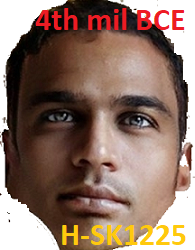0




















| Thumbs Up |
| Received: 1,458 Given: 1,641 |

Pseudocholinesterase deficiency is a condition that results in increased sensitivity to certain muscle relaxant drugs used during general anesthesia, called choline esters. These fast-acting drugs, such as succinylcholine and mivacurium, are given to relax the muscles used for movement (skeletal muscles), including the muscles involved in breathing. The drugs are often employed for brief surgical procedures or in emergencies when a breathing tube must be inserted quickly. Normally, these drugs are broken down (metabolized) by the body within a few minutes of being administered, at which time the muscles can move again. However, people with pseudocholinesterase deficiency may not be able to move or breathe on their own for a few hours after the drugs are administered. Affected individuals must be supported with a machine to help them breathe (mechanical ventilation) until the drugs are cleared from the body.
People with pseudocholinesterase deficiency may also have increased sensitivity to certain other drugs, including the local anesthetic procaine, and to specific agricultural pesticides. The condition causes no other signs or symptoms and is usually not discovered until an abnormal drug reaction occurs.
from Pseudocholinesterase deficiency: MedlinePlus Genetics
Genetic variants in the BCHE (butyrylcholinesterase) gene are associated with reduced BChE enzyme activity and prolonged post-succinylcholine neuromuscular blockade, which can lead to postanesthetic apnea and respiratory depression.
BCHE variants in a cohort of 13,301 patients of different ethnicities from all 50 states in US shows BCHE reduced function variants in all four major ethnicities in the US. Indeed, this is the first study reporting BCHE variant frequencies in African-Americans and Hispanics. Among the 4 ethnic groups, Caucasians were found to have the highest frequency of individuals who were positive for at least one variant with severely reduced function (A, F1, F2 and/or S1). Accordingly, Caucasians had the highest frequency of predicted moderate and severe BChE deficiency, followed by Hispanics. It is tempting to speculate that African-Americans and Asians may have lower risk of prolonged neuromuscular blockade by succinylcholine. However, it is also possible that other genetic variants may be important in determining BChE activity in these ethnic groups. from BCHE study
Frequencies of Predicted BChE Phenotype Categories in Different Ethnic Groups
Total African-American Asian Caucasian Hispanic
N Freq N Freq N Freq N Freq N Freq
Normal BChE activity 8402 0.6317 594 0.665 43 0.74 3754 0.6228 221 0.737
Mild BChE deficiency 3816 0.2869 252 0.282 13 0.22 1726 0.2863 61 0.203
Moderate BChE def 1075 0.0808 47 0.053 2 0.03 547 0.0907 18 0.060
Severe BChE def 8 0.0006 0 0 0 0 1 0.0002 0 0
Total 13301 893 58 6028 300
Alaskan Inuit have unusually high gene frequency for PCE deficiency. A relatively high frequency also was reported among Jews from Iran and Iraq, Caucasians from North America, Great Britain, Portugal, Yugoslavia, and Greece.
Multiple studies done both in and outside India have shown an increased prevalence of pseudocholinesterase deficiency amongst the Arya Vysya community. A study performed in the Indian state of Tamil Nadu in Coimbatore on 22 men and women from this community showed that 9 of them had pseudocholinesterase deficiency, which translates to a prevalence that is 4000-fold higher than that in European and American populations. Vysyas from the South Indian state of Telengana and Andhra were also100-fold higher rate of butyrylcholinesterase deficiency among them and also 50% mortality rate for coronavirus probably due to other conditions. They have one of the highest endogamy rates within subgroup for past few thousand years/108 generations.
from https://www.thehansindia.com/andhra-...navirus-685441
Pseudocholinesterase deficiency is common within the Persian and Iraqi Jewish populations. Approximately one in 10 Persian Jews are known to have a mutation in the gene causing this disorder and thus one in 100 couples will both carry the mutant gene and each of their children will have a 25% chance of having two mutant genes, and thus be affected with this disorder. This means that one out of 400 Persian Jews is affected with this condition
Yfull [B]ID: YF83218 admix -> https://i.ibb.co/NjwQTz6/myherit1.png
G25 Distance: 1.0778%
86.2 IRN_Shahr_I_Sokhta_BA2
5.2 ITA_Sardinia_C_o:I15940 1.4 ITA_Daunian
3.6 PAK_Saidu_Sharif_H
3.6 VK2020_SWE_Gotland_VA:VK464
There are currently 1 users browsing this thread. (0 members and 1 guests)
 Türkiye
Türkiye
Bookmarks